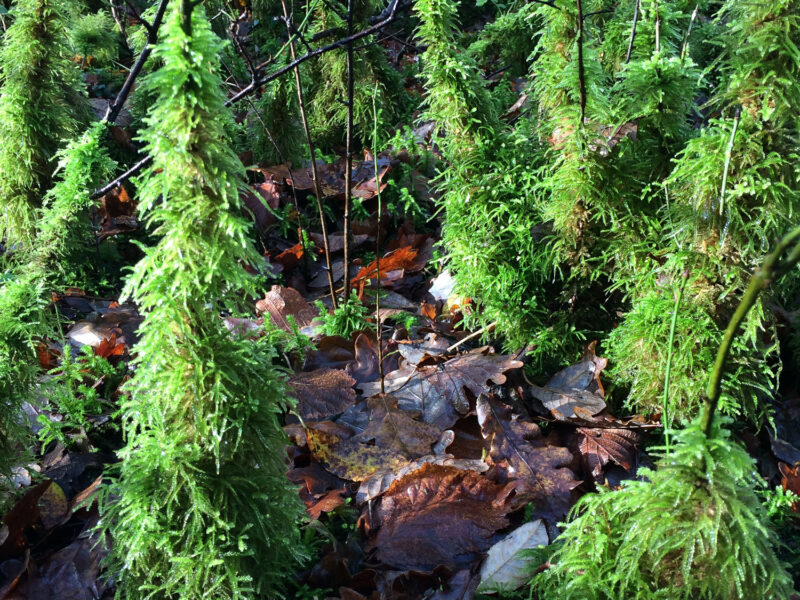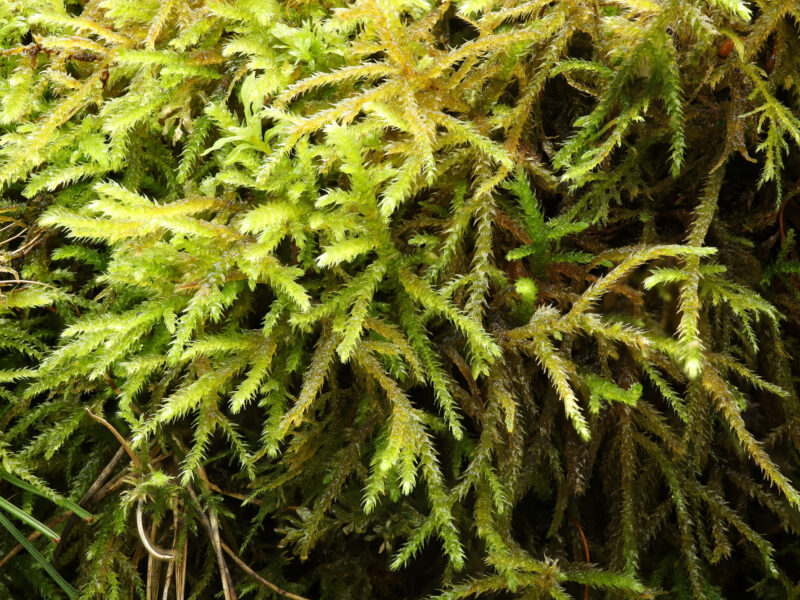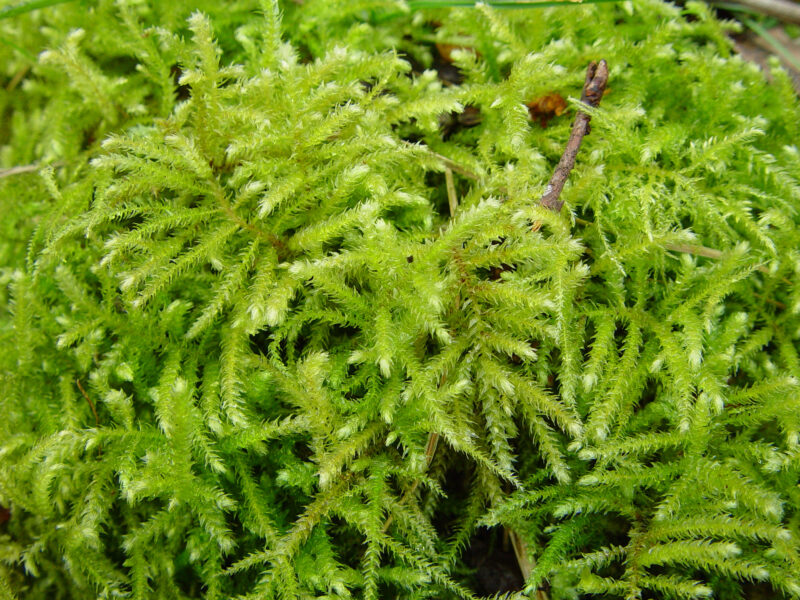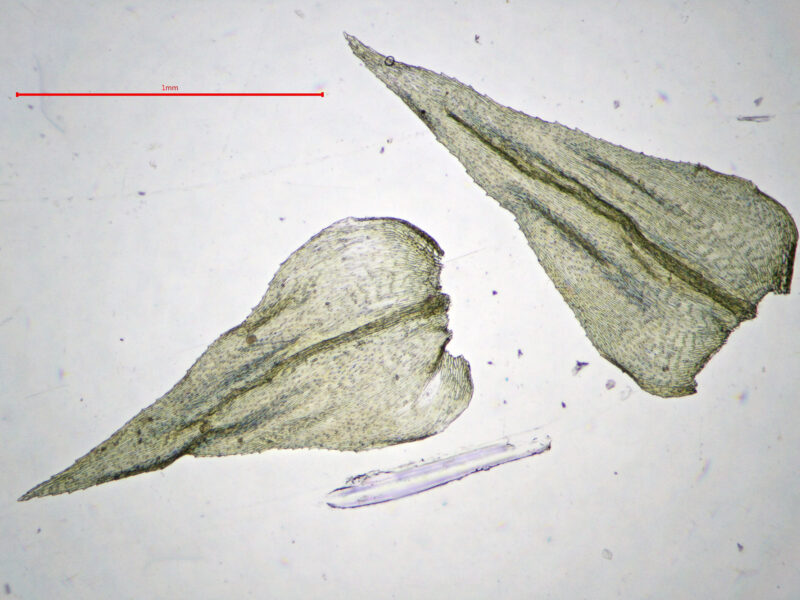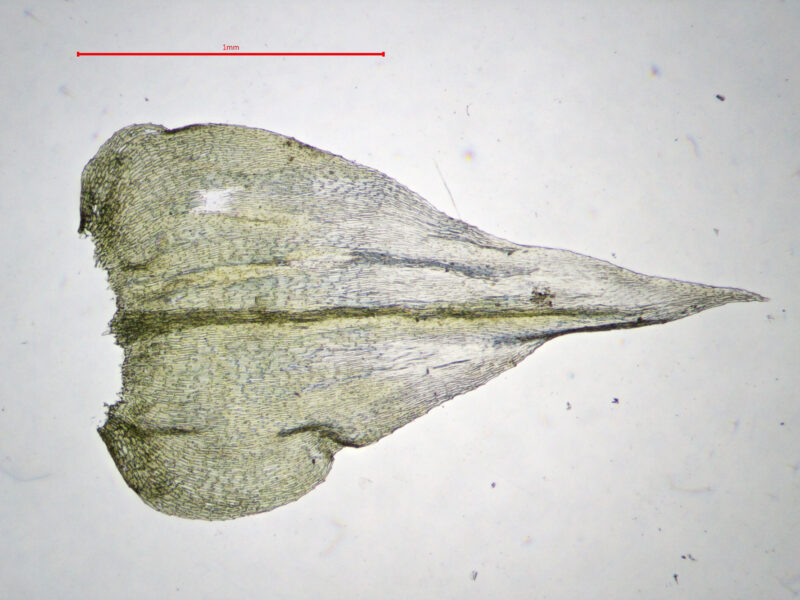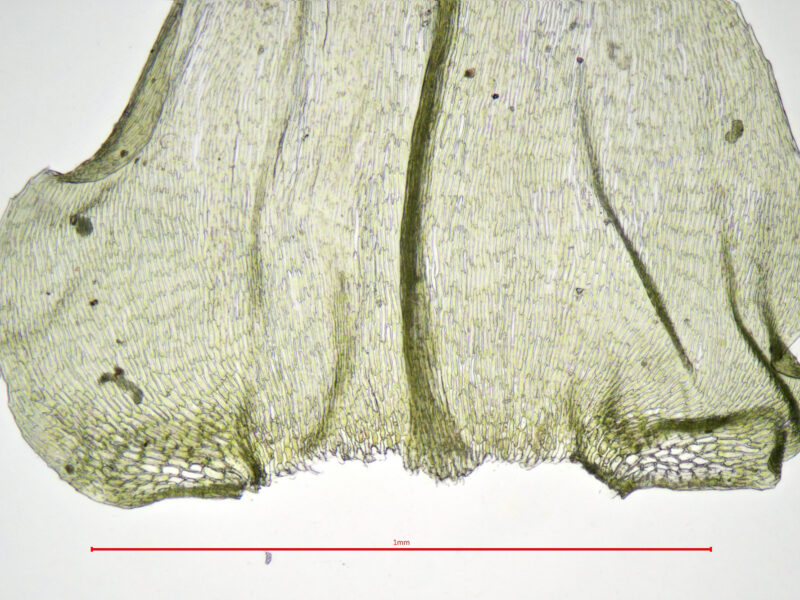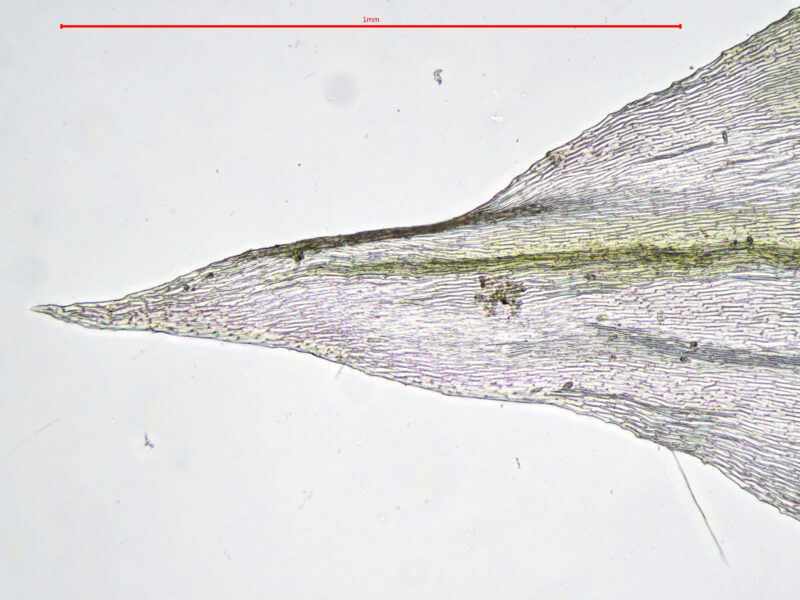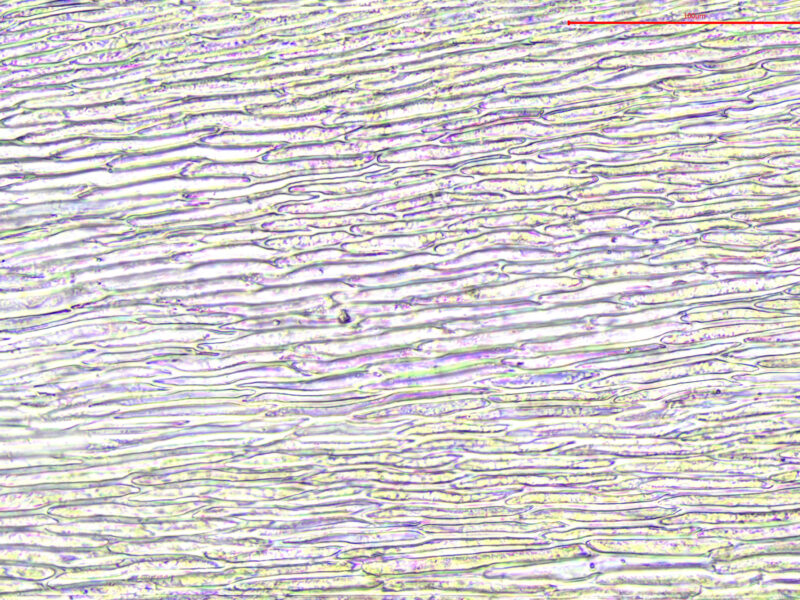Identification notes
Eurhynchium striatum is most abundant in lowland woodlands, particularly on poorly drained neutral clay. It’s a large pleurocarp and its growth form makes it look very bushy and three-dimensional. In woodland it often grows with the equally robust Thamnobryum alopecurum and, like that species, will sometimes form tumbleweed-like ‘moss balls’, which can roll around on the woodland floor.
Close examination of shoots with a hand-lens show toothed leaves that are widest above the base with longitudinal pleats that are strikingly obvious in dry plants. In moist leaves the pleats are less distinct. If you pick up a handful of E. striatum and squeeze it gently, you’ll probably notice that it feels quite springy, a character it has in common with Rhytidiadelphus loreus, which otherwise doesn’t resemble E. striatum at all.
Although Plasteurhynchium striatulum is said to be similar as it too has (slightly) pleated leaves, it is a species of sheltered limestone rocks and walls in woodland and does not grow on soil. It is considerably smaller than E. striatum and much scarcer.
Read the Field Guide account

